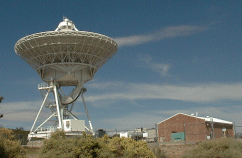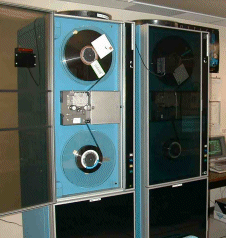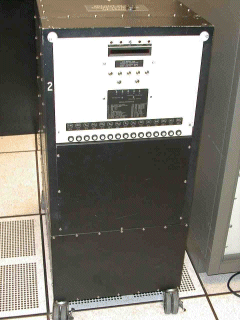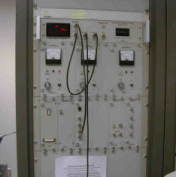|
|

|
After their trip through the antenna
and its various receivers and amplifiers, the radio waves travel
through the cables to the electronics in the antenna building to
be recorded.
|
|
Data from the astronomical
observations is recorded at 256 megabits per second. It is not
possible to use a satellite at this bandwidth for "real time"
correlation of data from all the sites. Therefore, there are two
tape drives that record data on digital tapes that are capable of
handling about 3 terabits of data. Each tape is about 3 miles
long and one inch wide. The data on one 3.5-inch floppy disk
would fit on one inch of tape. The tapes are then sent to the
Array Operations Center in Socorro where the data is correlated
and then sent to the astronomer to be reduced.
|

|

|
Because the data cannot be correlated
in "real time", accurate time must be kept so that all of the
tapes from the various sites can be synchronized exactly. The
hydrogen maser (left) emits a pulse that is then compared with the
GPS (right) time. The correct time is then recorded at various
intervals on the tape.
|

|
Modified on
Friday, 26-Sep-2008 12:15:34 MDT
|




